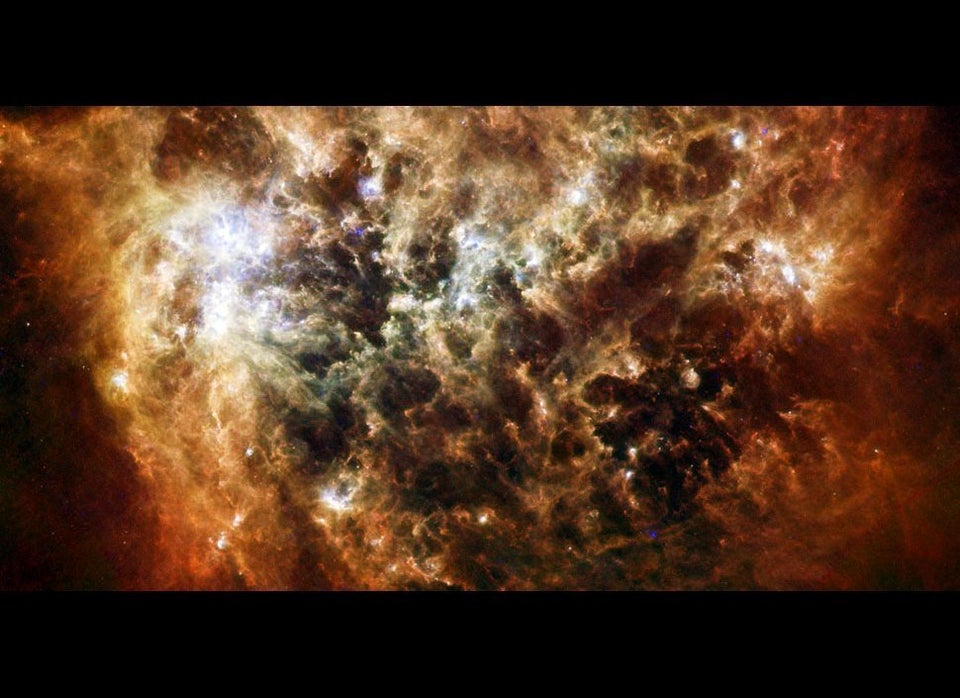
The gigantic black holes that lurk at the hearts of galaxies were apparently born big.
The central black holes in dwarf galaxies — the "seeds" that grow into the monsters at the core of the Milky Way and other large galaxies — are probably surprisingly weighty, containing 1,000 to 10,000 times the mass of our sun, a new study reports.
The finding goes against one popular theory of supermassive black hole evolution, suggesting that galaxy mergers aren't necessary to create these behemoths, which can harbor billions of times more mass than the sun. [The Strangest Black Holes in the Universe]
"We still don't know how the monstrous black holes that reside in galaxy centers formed," lead author Shobita Satyapal, of George Mason University in Virginia, said in a statement. "But finding big black holes in tiny galaxies shows us that big black holes must somehow have been created in the early universe, before galaxies collided with other galaxies."
It's also possible that supermassive black holes grow primarily by gobbling up gas and dust, getting bigger relatively sedately along with their host galaxies, researchers said.
Satyapal and her colleagues analyzed observations of dwarf galaxies made by NASA's Wide-field Infrared Survey Explorer spacecraft, or WISE.
Dwarf galaxies have changed relatively little over time, and they resemble the types of galaxies that existed when the universe was young. So they're a good place to look for nascent supermassive black holes, researchers said.
WISE's all-sky survey picked out hundreds of dwarf galaxies, which appear to sport strikingly large black holes.
"Our findings suggest the original seeds of supermassive black holes are quite massive themselves," Satyapal said.
While the results are intriguing, follow-up study will be necessary to fully flesh them out, outside researchers said.
"Though it will take more research to confirm whether the dwarf galaxies are indeed dominated by actively feeding black holes, this is exactly what WISE was designed to do: find interesting objects that stand out from the pack," astronomer Daniel Stern, of NASA's Jet Propulsion Laboratory in Pasadena, Calif., said in a statement. Stern was not part of the study team.
WISE launched to Earth orbit in December 2009 on a 10-month mission to scan the entire sky in infrared light. It was shut down in February 2011, then reactivated in September 2013 with a new mission and a new name. Now called NEOWISE, the spacecraft is hunting for potentially dangerous asteroids, some of which could be promising targets for human exploration.
The new study was published in the March issue of The Astrophysical Journal.
Follow Mike Wall on Twitter @michaeldwall and Google+. Follow us @Spacedotcom, Facebook or Google+. Originally published on Space.com.
